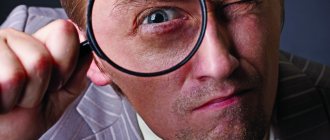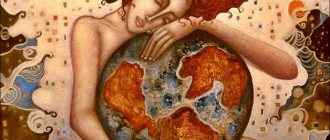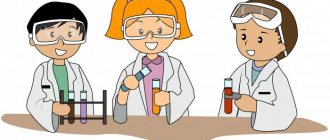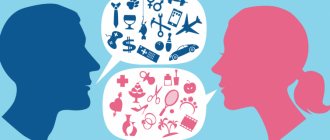Nowadays all kinds of aphorisms about the meaning of life are in fashion. Here are some of the most popular:
“The more perfect a person is on the outside, the more demons he has inside.” “The only person you should compare yourself to is your past self. And the only person you should be better than is you now.” “A person never gives up anything, he simply replaces one pleasure with another.”
But, putting these beautiful phrases in statuses, publishing them on social networks, quoting them in companies, most people do not even realize that they belong to the famous psychologist of the first half of the 20th century, Sigmund Freud, and reflect the whole essence of his teaching, known as psychoanalysis.
What is psychoanalysis
Psychoanalysis is a psychotherapeutic direction created by Freud, an effective method of treating various mental disorders that has gained wide popularity.
This is the first direction in psychology and psychotherapy, worked out in detail in terms of theory. Two hypostases of a person’s personality are clearly described - the unconscious (hidden, repressed, unconscious) and the conscious (superficial, visible, conscious, understandable). They constantly come into conflict with each other - hence the internal conflicts that ultimately lead to mental disorders. But the most important thing is that the unconscious almost always wins. It is this that becomes the motivator of most actions and decisions. The task of psychoanalysis is to open it and transfer it to the plane of consciousness.
Being a key concept, personality in psychoanalysis is maximally represented from the point of view of both hidden and conscious motives that determine its development and improvement throughout life.
What does this direction study? The subject of the study is hidden motives from the unconscious that provoke the development of various psycho-emotional disorders of personality and behavior. They are revealed through the free flow of thoughts expressed by the analysand (patient).
Today, the psychoanalytic direction is represented by different schools. But they are all united by basic concepts - the division into the conscious and unconscious and the search for the origins of problems in childhood. In psychology, this is a powerful tool for eliminating unconscious mechanisms and habitual patterns that interfere with the realization of desires and social adaptation.
From the history
Freud
The founder of psychoanalysis is Sigmund Freud (1856-1939), a famous Austrian psychologist, psychiatrist and neurologist. Practicing in different hospitals, he gradually accumulated experience in order to later formalize it into one clear and well-founded theory.
- For a long time he worked with patients suffering from neurotic and hysterical character traits.
- Then he consulted aphasic children (with speech impairments). He revealed that their problems are not caused by physiology, but by mental reactions.
- He completed an internship with the famous neurologist J.-M. Charcot, studying general paresis.
As a result of his extensive and varied practice, in 1895 he wrote the book “Studies in Hysteria.” This is the first theoretical basis of psychoanalysis. It is in it that the idea is formulated that the causes of most mental disorders are suppressed, hidden in the unconscious memories of traumatic situations from childhood. Here Freud suggested that they are all somehow connected with sexual desires.
In 1900, his second major work, “The Interpretation of Dreams,” was published. It describes the meaning of dreams for the human psyche. In his opinion, it is they who reveal the essence of the unconscious, which manifests itself in the form of symbols. They just need to be decrypted. The same book presents a detailed “topographic model of the psyche,” its structure and operating principle. According to her, social prohibitions and educational frameworks displace indecent sexual desires into the realm of the unconscious. This process almost always ends with a feeling of increased anxiety and the development of mental disorders.
Sigmund Freud (1856-1939)
Freud's psychoanalysis (Freudianism) subsequently constantly developed, expanded and was critically rethought. On its basis, new schools, trends and branches from classical theory appeared. Most often they were led by former colleagues and students of Freud. For example, A. Adler and K. G. Jung. Although on many issues they sharply disagreed with their teacher.
Jung
Many experts note that Jung's psychoanalysis is a direction radically different from Freudianism. Carl Gustav Jung (1875-1961) was a Swiss psychiatrist and teacher who developed the doctrine of archetypes. These are structural elements of the collective unconscious (there are archetypes of the baby, maiden, mother, rebirth, spirit, trickster, etc.). With their help, you can interpret not only dreams, but also myths of different nations. The goal of Jung's direction (as defined by the psychoanalyst himself) is the individuation of the individual. This is a process of mental development when individual abilities (talents) and unique characteristics of a person are fully realized.
Jung's concept of psychological types has gained particular popularity. The classification is based on psychological attitude (extroverted or introverted) and mental functions (thinking, feelings, sensations, intuition).
Neo-Freudianism
The second, later wave of the emergence of new psychoanalytic movements is neo-Freudianism. The most prominent representatives are E. Fromm, K. Horney, G. S. Sullivan, J. Lacan and others. They tried to find common points of contact between psychoanalysis and the social and human sciences.
Erich Fromm (1900-1980) - German sociologist, social psychologist, philosopher, representative of the Frankfurt School. He is the founder of neo-Freudianism and Freudo-Marxism. Linked Freud's psychoanalysis with Marxism and ethics.
Karen Horney (1885-1952) was an American psychologist and a key figure in neo-Freudianism. Shifted the emphasis from sexual desires as the main motivators of human behavior to the impact of the surrounding social environment. She outlined her views and ideas in the book “New Paths in Psychoanalysis.”
In Russia
In Russia, this trend became incredibly popular in the 1920s. Ivan Dmitrievich Ermakov (1875-1942) was a Russian psychiatrist and psychologist, who was also an artist and literary critic. Considered a pioneer of Freudianism in the USSR. He founded the State Psychoanalytic Institute and translated the works of Freud and Jung into Russian. Since the 1930s. psychoanalysis was persecuted and forgotten until the 1990s.
Modern psychoanalysis has more than 20 schools and movements. Their theories and approaches to treating disorders differ so radically that it is extremely difficult to find one source for them.
Kinds
Classic Freudianism
The basic concept in a nutshell: any mental disorder is the result of a conflict between the unconscious (formed under the influence of psychosexual development) and the conscious (dictated by upbringing and social norms).
Jungian psychoanalysis
Another name is analytical (complex) psychology. The goal is to comprehend and integrate the deep forces and motivations of human behavior through the phenomenology of not only dreams (as in Freud), but also folklore and mythology. The key concept is the collective unconscious.
Statistical
Olga Pertseva’s author’s technique, based on the square (psychomatrix) of Pythagoras. Allows you to create a digital portrait of a person, uncomplicated by society’s patterns imposed by patterns of thinking and behavior. One of the directions in numerology.
Existential
The technique of existential psychotherapy developed by J.-P. Sartre. According to her, a person is a complete integrity, and not a complex of behavior patterns that come into conflict with sexual instincts (as with Freud). The main tool is observation.
Humanistic
The founder is Fromm. Denies the leading role of sexual desires in personality development. Focuses attention on other factors of its formation - sociological, political, economic, religious and cultural.
Structural
The founder is J. Lacan. A direction that uses the special meaning of language to characterize the unconscious. It is actively used for the treatment of speech disorders caused by mental disorders and childhood trauma.
Ego psychology
The leading role in the psyche is assigned to the Ego (according to the classical concept, it was played by the Id). Representatives: A. Freud (the youngest daughter of Sigmund Freud), E. Glover, E. Erikson.
Object Relations Theory
The basis of the British school of psychoanalysis. The basic idea is that people’s attitudes towards the world around them in adulthood are formed under the influence of experiences in childhood. The main representatives are M. Klein and D. Sandler.
Modern schools with a psychoanalytic approach to the treatment of disorders are also Kohut's Self psychology, Sullivan's interpersonalism and Stolorow's intersubjectivism.
On the origin of neuroses and depression
Upbringing
represents a series of inevitable traumas for the child.
At the same time, the child is traumatized by the most significant people for him, whom he loves and who are authorities for him - these are parents, educators, teachers. To save his love for them and their authority, the child forgets about his traumas (see repression
).
And these difficult feelings associated with these traumas continue to exist in our unconscious, gradually poisoning our lives (See All psychoanalysis in two examples
).
Just as a leg broken in childhood can then hurt throughout life and cause lameness, childhood injuries also cause a series of chronic failures in life, neurosis and depression, but the cause of mental pain has already been forgotten.
Theory
An analysand is a patient with whom a psychoanalyst works.
Metapsychology is the entire theory of psychoanalysis.
Topographic model of the psyche:
- conscious - its superficial, understandable, visible part;
- unconscious - hidden, incomprehensible, mysterious, unconscious;
- preconscious - borderline, located in the area of the unconscious, but breaking out during certain situations of choice or in dreams.
Structural model of the psyche:
- Id (It) - instinct, obeys the principle of pleasure;
- Ego (I) - contact with the outside world through perception, controls behavior and thinking;
- Superego (Super-I) - moral norms, values based on moral prohibitions and formed in the process of education.
Personality structure according to S. Freud
Stages of psychosexual development - experience that leaves an imprint in the form of moral attitudes, character traits, behavior patterns:
- Oral phase (from birth to 1.5 years) - dominance of the id.
- Anal (1.5-3.5) - the formation of the super-ego under the influence of norms, rules, restrictions, prohibitions.
- Phallic (3.5-6) - increased interest in sex, which most often leads to Oedipus or Electra complexes.
- Latent (6-12) - absence of manifestations, break.
- Genital, adult (from 12 years old).
A protective psychological mechanism is an unconscious mental process aimed at eliminating negative experiences:
- substitute;
- compensatory;
- displacing;
- denying;
- projecting;
- sublimating;
- rationalizing;
- retrogressive.
These are the basic defense mechanisms described by Freud. Today the list has been significantly expanded and includes more than 30 mental processes.
Basics
Key points:
- human behavior, knowledge of the surrounding world and experience are determined by internal drives;
- they are irrational and unconscious;
- attempts to understand them cause psychological resistance, which manifests itself in the form of defense mechanisms;
- individual characteristics of behavior and personality depend on events that occurred in early childhood, at different stages of psychosexual development;
- conscious perception of the surrounding world and the material of the unconscious (repressed) come into conflict with each other;
- it leads to various psycho-emotional disorders: neuroses, depression, neurotic character traits, phobias;
- You can free yourself from the area of the unconscious if you become aware of it (but this can only be done with the help of a professional).
These are the basic ideas of psychoanalysis on which work with the patient is based.
Resistance processing process
An important stage is overcoming resistance and psychoanalysis of the individual. It begins with the doctor revealing to the patient those thoughts, feelings and resistances that have never been recognized before. After which the mentee is given time to penetrate as deeply as possible into resistance unknown to him until now, in order to further process and overcome it.
What are the patient's resistances? First of all, this is a mechanism that works on an unconscious level, and its task is to prevent the awareness of those unacceptable thoughts and desires that were previously repressed. Freud wrote that processing resistance is a very difficult part, and in practice it becomes truly painful not only for the patient. The psychoanalyst also faces a real test of patience. However, despite the complexity, it is this part of the work on consciousness that has the maximum transformative effect on the patient. This is where analytical treatment differs from treatment by suggestion.
Practice
General treatment regimen
The analysand verbalizes (pronounces) thoughts based on free associations that arise in his head, as well as fantasies and dreams.
Next, the psychoanalyst, based on this material, finds unconscious conflicts that are the causes of all the problems of the analysand.
He eventually interprets them to find a way to solve problems.
Examples from Freud's private practice
In his works, Freud described in detail not only the theory of psychoanalysis, but also the clinical cases that he himself encountered. There are 43 of them in total, but 5 of them are the most famous. They demonstrate how psychiatrists should tailor their sessions depending on the diagnosis they are dealing with.
The psychoanalytic approach is effective for diagnoses such as:
- alarming and conversion hysteria;
- obsessive-compulsive neurosis;
- psychoneurotic depression;
- neurotic character traits;
- phobias;
- psychosomatics.
Contraindications are various forms of schizophrenia and manic-depressive psychosis. The psychoanalytic approach to the treatment of impulsive neurosis, perversion, addictions and deviant behavior is decided on an individual basis.
Methods of psychoanalysis
Free associations
Is the basic rule of psychoanalysis. The projective method consists in asking the analysand to freely say whatever comes to mind. At the same time, he can even express what seems absurd and obscene to him. The task of the psychoanalyst is to see in this stream of thoughts, isolate and analyze the unconscious, and connect it with the patient’s childhood and dreams.
Dream interpretation
The analysand is asked to tell all his dreams in the smallest detail over several sessions. It is in them that the unconscious is hidden. In his work The Interpretation of Dreams, Freud explained the meanings of many dream symbols that are still used in psychoanalysis today. Most of them are associated with hidden sexual desires.
Interpretation
The central stage of any psychoanalysis session. The psychoanalyst deciphers symbols from free associations and dreams for the patient and explains the essence of the internal conflict. The analysand, in turn, must accept and understand this interpretation. Only in this way can he begin to undermine the system of stagnant pathological, obsessive experiences that has developed on the basis of the contradictions of the unconscious and the conscious.
Resistance
A protective mechanism of the psyche that prevents penetration into the unconscious. This is the force that maintains the painful state. It prevents the patient from saying everything that is in his head. Often this is upbringing or social stereotypes.
Transfer
Another name is transfer. Unconscious transfer of previously experienced feelings to a completely different person (not the one to whom they were directed before). Including a psychoanalyst.
Elaboration
The last stage with the analysand is when a restructuring of the psyche occurs. The main task is to change habitual behavior and established relationships through liberation from pathogenic patterns.
These are the main techniques used by a psychoanalyst in working with various mental disorders.
Interpretation method
As mentioned earlier, interpretation is the most important tool of a psychoanalyst when working with free associations and dreams. After all, it is one thing to receive material, and quite another to interpret it correctly. During interpretation, the received unconscious material is rationalized—awareness, together with the client, of the true causes of neurotic symptoms, as well as the true meaning of the client’s aspirations. It is the interpretation that can lead to a therapeutic result, naturally, only if it is interpreted correctly.











